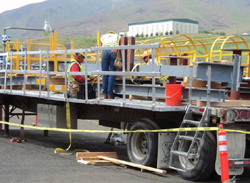The Fourth of July celebrates an important day for Americans and proponents of liberty across the globe. With the signing of the Declaration of Independence our founding fathers paved the road for new ideas ranging from civil rights to individual freedom and equal opportunity. The beauty of the American system is in its providence of choice. Each and every American citizen has the opportunity to capitalize on the liberties promised by the Constitution and Bill of Rights. As Americans we know that we must work for the security of our family. Opportunity is provided, success is earned. Each individual is blessed with the same system of laws, liberties, and protections. Those who work hard will excel.
The basic principles of American liberty branch off and extend throughout society. At times it can be perplexing to consider how little we take advantage of the system that is set up to enable us to succeed. One such area is workplace safety. Federal protections for employee safety have been a part of American society since the late 19th century, and OSHA legislation was first enacted over 40 years ago. The laws help to protect not only the individual worker, but also to shield businesses from the risk associated with workers’ compensation claims, lost employee time, and production delays. Yet, OSHA citations are commonplace throughout industry.
Declare Your Independence in 2013
In 2013, we challenge you to Declare Independence from Work Injuries. As a society blessed with personal freedoms, it is inherent that we encourage each other to achieve greatness. The opportunity to achieve an injury free workplace is provided as a safety incentive to all businesses, and the benefit, as is so often the case, cannot be expressed merely in dollars and cents. A safe employee is a happy employee, and happy employees work hard, recruit their friends, and provide great service to your customers. Take the time to consider the graciousness of a government that provides support for workplace safety, and factor how you can improve safety at your business to earn maximum benefit. Protect yourself from risk and remember the long term benefit of a safe workplace. After all, it’s the American way.

